Prototypes of off-road vehicles from WES Report, which are not yet in the site.
Wilson, Nuttall, Raimonds Engineers in the 1950s and 1960s built the first operational articulated tracked vehicles of which several types are featured on this site. Killian McInerney, http://decentmfg.com/history /, found on the Internet a report on this topic "Ground Crawling: 1966, the state-of-the-art of designing off-road vehicles" conducted for US Army Engineer Waterways Experiment Station, Vicksburg, Mississippi written by Wilson, Nuttall, Raimond Engineers, Inc., Chestertown, Maryland. https://drive.google.com/file/d/1lEiJrOCUEfbRbZlbmkcifTDp2EYe2jO4/view
This report helps to design new and efficient all-terrain vehicles and updates the subject in 1966. There have never been so many projects at this time: Airoll, PATA, Terrastar, Rolligon, Terratyres, Cobra, Gama-Goat, Goer, Marsh Screw Chrysler, RUC, Pneumatic tracks Bonmartini, MARV GMRDL, VMEA 8x8 and 10x10, 12x12 Lockheed, FWD, Foremost, Meili 6x6, Firestone Jeep, T23, T51E, USATB and Rovers: Bekker Flex Lunar Vehicle Frame 6x6, Nortrop 8x8, Bendix, Grumman, and many prototypes for lunar exploration: walking ( General Electric, USATAC-LLL / GE,), ELMS Elastic Loop Mobility System, even ideas like snake like robots. Land vehicle projects that were then built in series were reduced to articulated track vehicles, such as those of WNRE, often with a positive control pitch. Sweden, Finland and Canada were the forerunners and many models exist today in Russia. Paradoxically, there does not seem to be any serial articulated vehicles in the USA, at least in the US Army. There was a series of Gama-Goat and Goer, articulated on wheels, but they were abandoned for rigid vehicles, because of their price, their lower payload, the noise and their difficulty to drive and knowing that 90% ?? of military vehicles travel on roads (‘Wheels’ Group in the 80s). Maybe in peacetime ! The 'Goers' had distinguished themselves in Vietnam in muddy terrain that only they could cross. Articulated wheeled vehicles are still used in the civil for earthmoving and logging. In fact, for maximum mobility, tracked, articulated vehicles with pitch control are preferred. These vehicles are reasonably sized ; they can change direction in soft terrain without loss of power or bogging and can cross vertical obstacles more important than a two-track vehicle.
The Airoll, the PATA, and the Terrastar were created essentially by aeronautical companies, as also the Gama Goat. However, we can notice that the imaginative and unimpeded aerospace industry has been given the responsibility for the design of the Moon's exploration vehicles, the vast majority of the machines on offer (35 out of 47) are on wheels [Romano, 1965].
In addition to military vehicles (tracked, wheeled and / or unmanned), civilian vehicles fall into 8 categories:
1) agricultural tractors
2) earthmoving equipment
3) mining and construction vehicles
4) vehicles for off-road transport
5) logging machines
6) vehicles for oil field and similar
exploration work
7) sports vehicles
8) recreational amphibious vehicles 6x6, 8x8 gold articulated.
Fundamental determinants of the off-road performance of a vehicle are:
1) its overall form,
2) its scale in relation to nature. A large vehicle can ride over obstacles which are not too big but a little vehicle could be stopped by them. What is the best : a big vehicle that run strait in a forest of little or medium trees or a little one that sneaks between trees ?
3) the level of both nominal and peak unit
loadings placed by it on the ground.
They will have to evolve on different terrains:
1 - The chaotic grounds causing vibrations that the driver can control by the speed. Mobility is essentially speed.
2 - The singular obstacles to progression due to interference, excessive stress causing extreme movements.
3- Networks of obstacles that are insurmountable by a given vehicle, and which may or may not be penetrable by the maneuver. The expanses of mud (Muskeg) and vegetation normally fall into this category.
Virtually all the specialists of the time on the creation of new vehicles are cited in this report. There have been since the 19th century with patents but especially in the years 50-60 where the research on the mechanics ground-vehicles emerges: Freitag and Green of WES in 1965, Liston in 1964, also, Ogorkiewicz, who wrote quite a lot of articles in the 60's (The Engineer) on articulated vehicles as well as books on the engineering of armored vehicles. Bekker, LLL, Land Locomotion Laboratory, and then at GM at Santa Barbara, the father of ground mechanics applied to all-terrain vehicles, which predicts the performance of vehicles in a given terrain, predictions helped by the inventions of various researchers like the cone penetrometer, the shear vane, the bevameter or the flat / shear tester. The Vehicle Cone Index (VCI) as a metric for directly quantifying the ability of a vehicle to traverse soft-ground terrain was adopted by the US Army. Land locomotion testing laboratories on different types of terrain were opened in several countries.
In this report, for example, we can read the research results that can be used to design wheeled vehicles better adapted to soft ground in 1966:
"1) The Eklund Mobility Factor [Eklund, 1945]
2) The WES 50-pass traffic ability criterion
[VMEA, 1965]
3) The WES Sand Tests [Freitag and Knight,
19 6 3; Freitag, 19 6 5]
4) Preliminary WES clay test results [Freitag,
1965]
5) Preliminary first-pass traffic ability
criterion [WNRE, 1965]
6) The FVRDE equations for rigid wheels in
clay [Uffelmann, 1961]
7) LL soil value system and soil vehicle
model [Harrison et al., 1959] "
"A significant but partially intangible asset to the state of the art is the existence of the International Society for Land-Vehicle Systems (ISTVS), founded in 1962 by Bekker, following the fruitful First International Conference on the Mechanics of Soil-Vehicle Systems, held in Turin, Italy, in 1962'.
ISTVS was formed "to effect the achievement and advancement of knowledge of the field of vehicle mechanics" and "military and civilian vehicles".
Beginning in 1964, ISTVS has sponsored a substantial quarterly, the Journal of Terramechanics, edited by A. R. Reece, of the University of Newcastle, U. K. In August 1966 the society held its second international conference in Quebec City, Quebec. There were also accumulated file of the Journals, the Proceedings of the Turin and Quebec Conferences [ISTVS, 1962, 1966], plus papers presented at a series of specially organized sessions on the ground of three consecutive Society of Automotive Engineers (SAE) congresses, 1963 , 1964, 1965 [see SAE, 1964], and the 1965 Institution of Mechanical Engineers Symposium on Earth-moving Machinery [IME, 1965], Eklund's 1945 report and some recent reports the current technology available to the designer.
"The wide publication and the claims made on their behalf, are based on Bekker's pioneering early work (1956, 1960). Institution of Mechanical Engineers [1963] In the past 12 years (1966) Bekker's Approach to Landing (LLL) as developed by LLL, the system has departed from some of Bekker's earlier simplifications, and is now referred to as LLL System", used until nowadays.
|





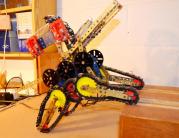



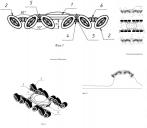
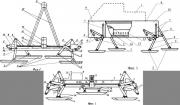
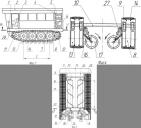



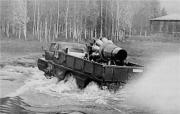

 Français
Français
 English
English
 Español
Español
 Italiano
Italiano
 Deutsch
Deutsch
 Nederlands
Nederlands
 Portuguesa
Portuguesa